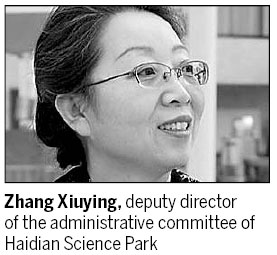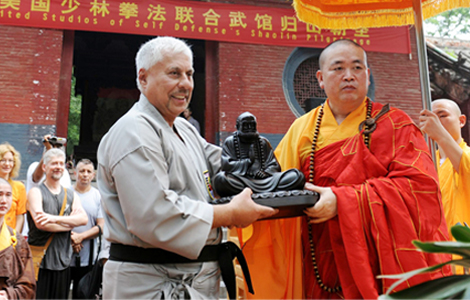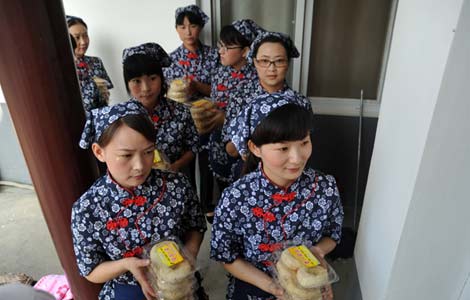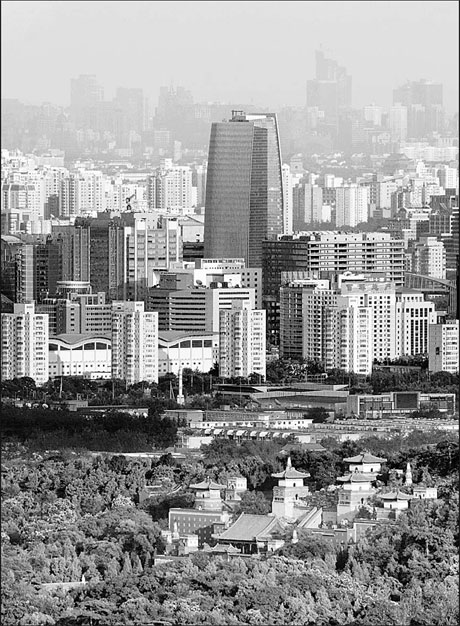High-tech park rethinks future
Updated: 2013-07-04 07:51
By Zheng Yangpeng (China Daily)
|
||||||||

|
The Haidian Science Park has nurtured famous brands such as Lenovo, Founder and Netease. Provided to China Daily |
As a pioneer of China's national high-technology zones, Beijing's Haidian Science Park is leading the push for a new development strategy to become a world-level "innovation downtown", reports Zheng Yangpeng
As a technology and innovation hub, Zhongguancun is a household name in China. But as the worldwide technology revolution is invigorating the 105 national high-technology parks and an even larger number of new, lower-level parks, the one-time bellwether is rethinking its strategy.
At a recent gathering of high-technology parks nationwide, representatives of most parks boasted about how many companies they had and the level of annual corporate revenues. The report submitted by Haidian Science Park, the core area of Zhongguancun, was one of the few that took a serious look at the prospects for science parks.
This is not because the growth of the park has stagnated. On the contrary, the business is growing robustly.
In 2012, more than 10,000 hi-tech companies generated revenues of 1 trillion yuan ($160.6 billion) from January to November, up 20 percent over the previous year. But the governors of the park have a sense of crisis.
"I think we have to rethink a series of basic concepts that were taken for granted. For example, what is a corporation? How about using Web 2.0 to build better next-generation government services?" said Zhang Xiuying, deputy director of the administrative committee of HSP.
Pressing questions in her mind include: in terms of "innovation function", how to shift from "infrastructure" to "functional planning"? In terms of innovation policies, how to shift from the previous "18 preferential policies" to "one plus six inward-stimulating polices"? In terms of "innovation orientation", how to shift from "full production in whole chains of industries" to a "focus on the human life for long run"?
In general, the question is how to change from a "science park" to a world-level "innovative downtown"?
Noble origin
Located in northwestern Beijing where colleges and universities gather, HSP had unparalleled conditions for development from the start.
In the area, there are 78 colleges and universities, including Peking University and Tsinghua University. China's two major academies, the Chinese Academy of Sciences and the Chinese Academy of Engineering, are in Haidian.
The area has 312 research institutes, 69 R&D institutes set up by multinational corporations, 35 key labs and 15 high-tech labs. It has intelligence resources that no other Chinese city can compete with.
So it is no wonder that China's first electronics avenue formed here spontaneously, without government planning, in the 1980s. Zhongguancun's status was officially recognized in May 1988 when China's first science park was built there.
It has since nurtured nationally famous brands like Lenovo, Stone, Founder, Tsinghua Tong Fang and Netease. By the late 1990s, it was already being compared with Silicon Valley.
But HSP is not another Silicon Valley, where high-tech start-ups have spontaneously gathered, generating an industrial agglomeration effect. The evolvement of the administrator of HSP in itself is a long story.
"We had a feeling that our model should be different from other 'economic development zones' that were popular at that time. We also felt that though we should learn from overseas, their models could not be directly copied," recalled Zhang, who joined the HSP administrative committee in 1988.
The book Paving-stones, compiled by Hu Zhaoguang, the first director of the Beijing New Technology Industrial Development Experimental Zone, documents how the first generation of administrators changed their working ways to cater to the needs of enterprises.
The initial administrative innovation, according to the book, started with streamlining of administrative approvals. At that time, an application to start a company required months of administrative approvals by several government apartments.
"Even a passport application took at least three months, during which time the initial enthusiasm could be dampened and cooperation opportunities could be spoiled."
Zhang recalled that when they made the point that the officials assigned to their park had no authority to approve company formations, the Beijing Administration for Industry and Commerce, which was in charge of company set-ups, soon lifted the rank of the assigned official so he could approve company establishments directly.
The committee also came up with ways of encouraging innovation. The main vehicle is using tax rebates to subsidize corporate research, as well as housing for scientists and technicians.
The committee also strengthened trilateral cooperation among universities, industry and research.
By the end of 2012, HSP had established 35 incubators, 13 of which were State-level. Its incubators have created 250,000 jobs, 3,868 of which went to returned overseas students, according to the committee.
Soul-searching
In the history of HSP's development, there has never been a shortage of reflection and soul-searching. In 2005, a book entitled The Death of Zhongguancun became a sensation. In the book, Fang Xingdong, an IT writer, presented a series of questions: Who are the main actors of innovation in the park: established companies or grassroots companies? Who should play a greater role in the park: the government or the market?
For Eric Nilsson, a PhD in industrial economics who has researched science and technology parks, the answer is straightforward: governments are bad at running businesses, because they often have other goals than innovation, customer focus and competition.
"The government cannot pick firms, the private sector has to do that," he said. "Governments can provide an environment through rules, regulations, access to financing, access to facilities and services.
"Governments can also identify new areas such as biotechnology, nanotechnology, green technology, smart grids, high-speed trains and the like, for societal reasons, or because it seems like a promising area for future growth, or because competition can stimulate research and encourage links to innovators."

Liu Ying, an economics professor with Tsinghua University whose research focuses on innovation and entrepreneurship, said the role of administrators of science and technology parks should be similar to that of Jack Ma of Alibaba.
"Ma built a big stage. The players should play the main role in their production and service that totally follow rules of market, rather than that of government."
Zhang also knows the government's role has limits. She said instead of telling corporations what to do, the administrators should be a supporting and consulting body that provides links among numerous firms.
For example, in 2009, the Zhongguancun National Innovation Demonstration Zone was founded as the first of its kind in the country, with endorsement from the State Council.
The establishment of the zone was designed to encourage enterprises to try out new measures and pilot projects. The zone also encouraged firms in this park to expand overseas.
But Zhang said even three years before 2009, she was thinking about supporting corporations' overseas ambitions. That year, she established a fund to promote this endeavor. The three-year trial project, the first of its kind among the numerous high-tech zones in China, offered an initial 5 million yuan to support corporate activities such as purchasing internationalization-related intermediary service and international personnel exchanges.
A number that could demonstrate the dividend from internationalization is: before receiving the funds, the total sales of enterprises stood at 22.1 million yuan. After the fund, total sale income soared 378 percent to 105.7 million yuan.
"The enterprises that received funds from us could also use them to prove to overseas investors that they have the government's blessing," Zhang said.
She said at present, many enterprises in HSP have a strong desire to "go global", but they need the correct approach.
Internationalization, Zhang warned, is not about how much they have invested overseas, but the mentality of the entrepreneurs who run the companies.
Now Zhang is spending much of her effort on upgrading a platform named iBridge. iBridge integrates blogs, communities, RSS and other Web 2.0 devices.
Martin Grossman, a professor with Bridgewater State College, said iBridge is "an emerging global knowledge management platform".
Contact the writer at zhengyangpeng@chinadaily.com.cn
(China Daily USA 07/04/2013 page14)

 Ecuador finds spy mic for Assange meeting
Ecuador finds spy mic for Assange meeting
 US martial artists arrive at Shaolin Temple
US martial artists arrive at Shaolin Temple
 July 4 in Prescott: Balance of grief, patriotism
July 4 in Prescott: Balance of grief, patriotism
 Jubilant crowds celebrate after Mursi overthrown
Jubilant crowds celebrate after Mursi overthrown
 Growth slowing for services
Growth slowing for services
 Venezuela eyed as Snowden seeks asylum
Venezuela eyed as Snowden seeks asylum
 Anti-terror drill staged in Xinjiang
Anti-terror drill staged in Xinjiang
 Memorial service held for 19 Arizona firefighters
Memorial service held for 19 Arizona firefighters
Most Viewed
Editor's Picks

|

|

|

|

|

|
Today's Top News
US welcomes China's engagement in Africa
Data show shifts in US, China economies
Obama, Merkel agree talks on surveillance program
Filipino executed for drug trafficking
Obama orders US to review aid to Egypt
Snowden still in Moscow
China urges more efficient uses of fiscal funds
Egypt army topples president Morsi
US Weekly

|

|







